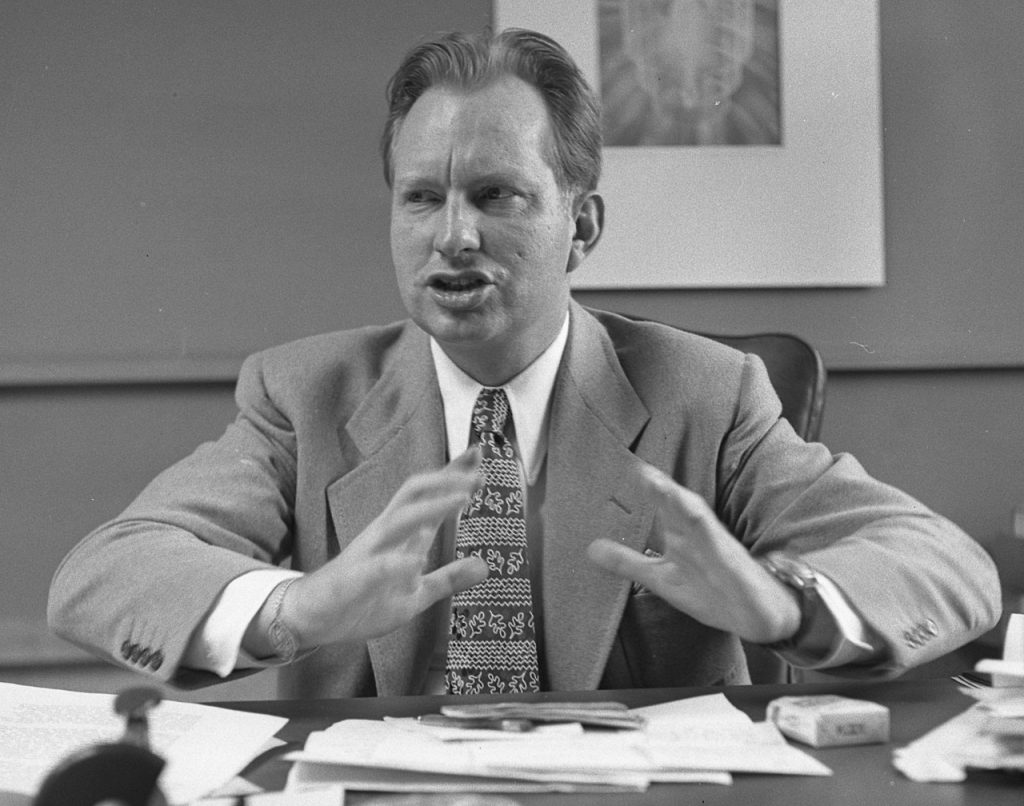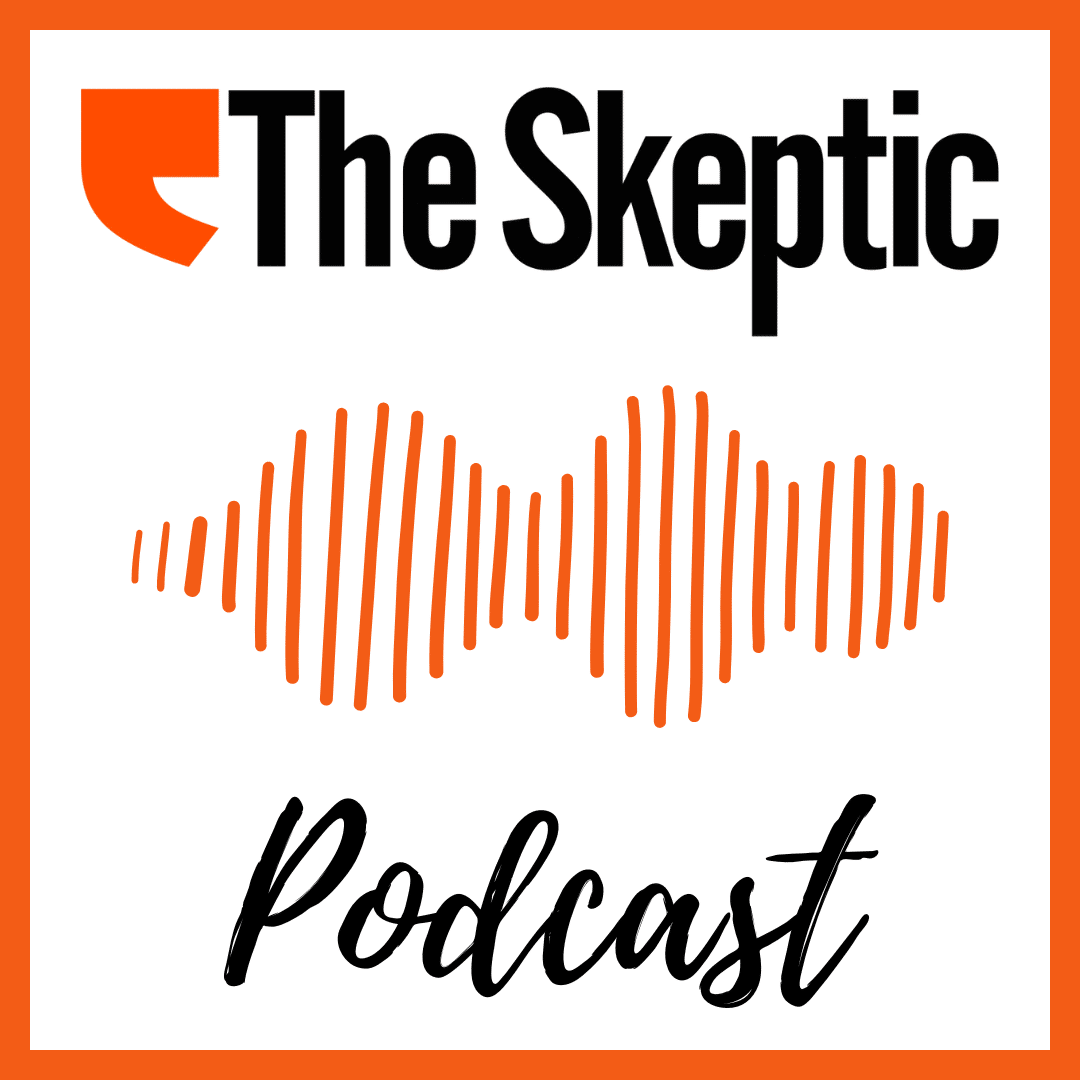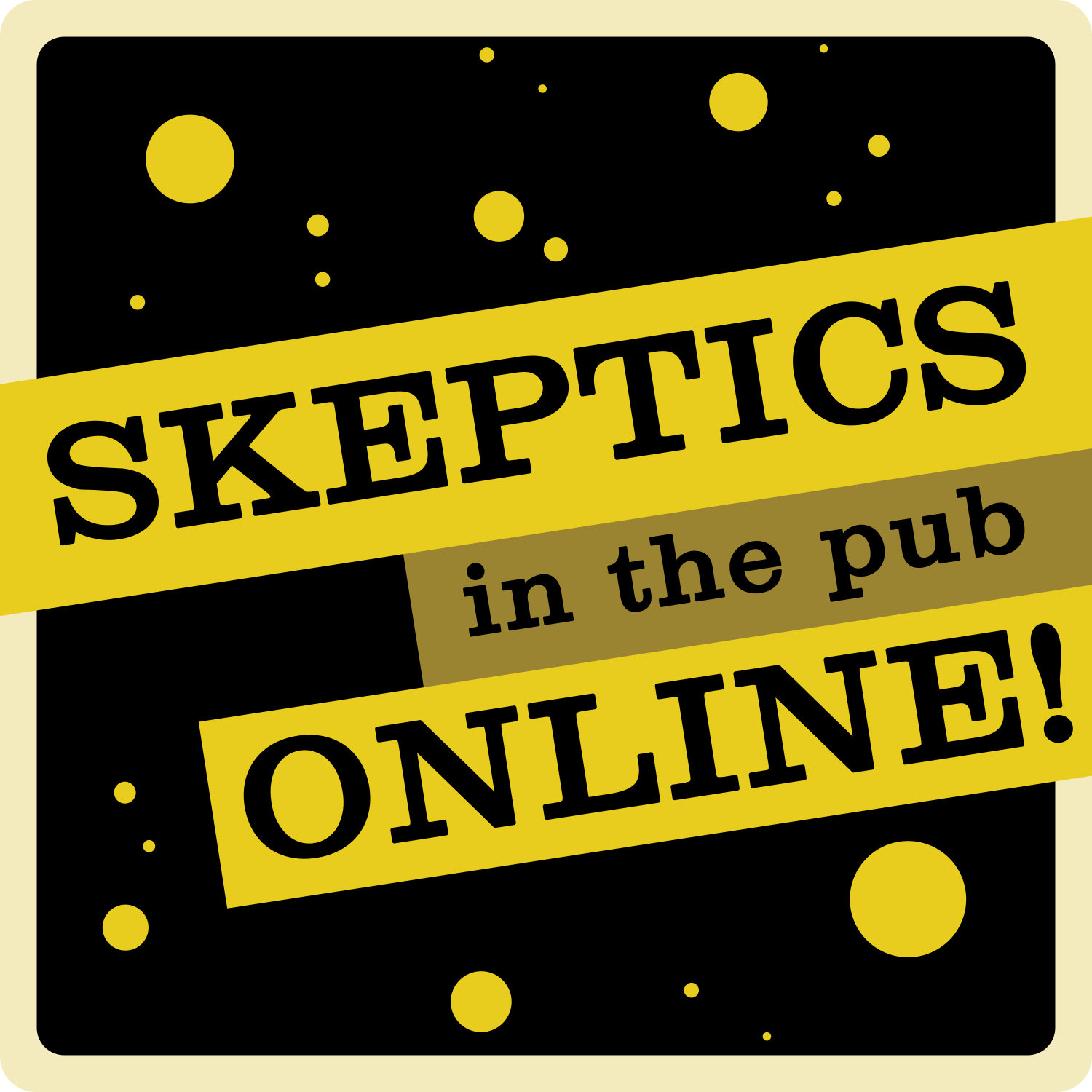This article originally appeared in The Skeptic, Volume 5, Issue 3, from 1991.
I was surprised to read John Clark’s article on L Ron Hubbard (The Skeptic, 4.2). Madame Blavatsky was described by Richard Hodgson of the Society for Psychical Research as one of the most accomplished, ingenious and interesting imposters of history. Hubbard might well be described in a similar manner. Ron Hubbard had the ability to anticipate future trends and to exploit them. Up to the second world war, psychotherapy was the province of those who had been medically trained. It was concerned with the rooting out of forgotten experiences of childhood buried in the unconscious mind, which were assumed to be the cause of adult neurosis.
It was implicit that there was something wrong with the patient. Analysis was time consuming and elitist Hubbard introduced Dianetics and suggested that anyone without medical training, could – through a knowledge of Dianetics – achieve results easily and more effectively than the blundering psychoanalysists.
One of the main troubles with the Freudian analysis was that non-directive free association could take years in finding the buried seat of trauma. The patient would protect the guilty knowledge from the therapist. Hubbard, by the use of his E Meter (actually a primitive lie detector) claimed he could quickly (and any Dianetic Auditor, or therapist) locate the source of the trouble, thereby saving hundreds of therapy hours. Dianetics was therefore a streamlined system of analysis, very much influenced by Freud, disguised the use of Hubbard’s own invented jargon. The buried cause of the neurosis, called by Hubbard ‘aberration’, was an ‘engram’. This term had been used by lmmanuel Velikovsky when he was in close contact with the Viennese analysists to describe ‘a permanent trace recorded on biological tissue’. Velikovsky has been described by Martin Gardner as ‘an almost perfect textbook example of the pseudoscientist’.
Hubbard did claim that total recall of all we had experienced was possible even though we were in the womb at the time. He also claimed that we recalled what we ‘heard’ even when were time unconscious. All this seemed to the layman as rather incredible, although Dr Wilder Penfield, a Canadian neurosurgeon, had noted this phenomenon while operating on epileptic patients. This phenomenon has now been generally recognised and has also been observed in hypnotised subjects.
The danger is that the hypnotiser may produce by suggestion, false memories in the mind of the subject. Hereby lies the danger. I suggest that Dianetic therapy, called by Hubbard ‘auditing’, produces a mental state which is analogous to the hypnotised trance. This gives the Dianetic auditor considerable power over a suggestible person, and Dianetics is not controlled by a strong professional code.
It was also suggested by Hubbard that past lives could be recalled while undergoing Dianetic auditing. This was some years before the ‘Bridey Murphy’ craze hit America. It is now relatively common for some individuals to search for imagined past lives whilst hypotically regressed. But Hubbard was there first. Another first for Hubbard was his experimentation with plants. He would wire tomatoes up to E Meters, and decided that plants could feel pain. Clyde Backster was to hit the jackpot some ten years or so later with his book about the psychic powers of plants. Many people are now convinced that plants are now more likely to flourish if spoken to kindly. It is not usually suggested, although the reverse might easily apply, that if they do badly plants could be threatened with the compost heap.
Hubbard’s fantastic idea that the embryo can hear in the womb and can be influenced by the words expressed would seem to have support from Dr Michele Clements of the City of London Maternity Hospital, who in 1979 wrote an article. ‘What the foetus hears, an adult remembers’. It was claimed that it had been demonstrated beyond reasonable doubt that the foetus hears things external to the womb after four months, and reacts to these sounds and memorises them. It has also been claimed that surgeons now recognise this danger to patients while unconscious in the operating theatre and those in the theatre are warned to be careful what they say.

Scientology emerged in 1952. Whereas Dianetics was directed to the body, Scientology was directed to the ‘soul’. The existence of the latter was said to have been incontrovertibly scientifically validated by Hubbard. What is true is that Hubbard claimed that the aim of Scientology was to make ‘the able more able’. So whereas the emphasis of Dianetics was to cure the individual of mental or physical disability, the aim of Scientology was to raise the level of a person’s ability and consciousness.
Hubbard had again anticipated the leap which so many Freudian and other analysts were to make in launching the Human Potential Movement (HPM). The HPM did not come into the general public consciousness until after the Esalen Institute was set up at Big Sur in California in the 1960’s. Scientology introduced the concept of a ‘Tone Scale’. The aim of method was to raise a person’s consciousness up the tone scale. There were graduations from zero up to an unspecified upper limit, and for normal individuals four was the desired goal. If one was stuck on zero one was dead. It was sometimes implied that it might be possible for some elite members within the movement to achieve such a high level on the tone scale that they would be immortal.
If one ignores the latter absurdity it is possible to see Hubbard’s approach reflected in the HPM. Their aim was to concentrate on the present, not the past as the analysts had done. Hubbard told people that they should be in present time, both aimed at raising consciousness and abilities. The techniques used by the Scientologists included mind expanding exercises, creative visualisation and guided fantasies which were to be used later by the HPM and followers of the New Age movement. Maslow’s ‘Hierarchy of Needs’ produces a scale which reminds one of Hubbard’s Tone Scale. So, one must admit how perceptive the founder of Dianetics and Scientology was in anticipating future trends and enthusiasms.
I strongly disagree with the advice given by John Clark that one should try Scientology and see if the results are beneficial. Clark may have survived his involvement unscathed, and in fact, he seems to have believed that he has benefited over the years. Perhaps he merely grew up and matured. In any case if a person devotes time, energy, money and emotion to a particular cause it is extremely difficult to later decide that it was not worthwhile. This is done to avoid a mental state known as cognitive dissonance. Individuals who are highly suggestible, those who are emotionally vulnerable, those with a weak sense of their identity, and in fact all inadequate personalities should avoid involvement with Scientology like the plague.
An article in The Listener (30 April 1987), based on a BBC Panorama programme, told how the psychological techniques of Scientology could be used to swindle inadequate personalities, mentally entrapped by the cult, out of increasingly large sums of money. It was claimed that the organisation deliberately targetted young people who were possibly lonely and idealistic who had access to large sums of money. Once enmeshed by Scientology such young people could be swindled out of all they possessed. Those who tried to escape would be threatened and put under immense psychological pressure.
Cyril Vosper tells how, as a young man, he was attracted by Scientology, and the hold that the movement gained over him. After fourteen years it took strength of will, great fixity of purpose, resolution and courage to escape from the toils of the organisation. The attraction of Scientology and other cults of psycho-salvation can be understood by reading Eric Hoffer’s The True Believer. Hoffer was writing mostly about the attraction of revivalist religious movements and totalitarian political parties. Scientology claimed to be a religion and was certainly totalitarian. It attracted the idealistic young and those who needed genuine sympathetic counselling. It then perverted their idealism and exploited their weaknesses. Perhaps, worst of all, it resulted in people (as in all totalitarian groups) in handing over their ethical judgement and conscience to an imagined infallible leader.
Whether Hubbard was an original thinker, I would doubt. That he had a considerable flair for anticipating future fads and trends cannot be doubted. But how could any rational person take seriously a person who could write that ‘Dianetics was a milestone for man comparable to man’s discovery of fire and superior to his invention of the wheel and the arch’. Or in his History of Man: ‘This is a cold blooded and factual account of your last sixty trillion years’.
An earlier book was Excalibur (1938); the title again shows the author’s facility for anticipating future trends. The title is suggestive of the ‘sword and sorcery’ phase of science fiction. Hubbard was, about this time, a freelance writer of science fiction. He claims of Excalibur that four of the first fifteen who read the book went insane. Hardly a good selling point, I should think. It was withdrawn but re-issued later with the author’s personal signature for the price of $1,500. It has been suggested that those who went mad were driven insane when they realised what rubbish they had spent so much money on.
Further reading
1. Fads and Fallacies in the name of Science. Martin Gardner. Dover Publications. New York. 1957.
2. The General Practitioner. 13 April 1979
3. The Mind Benders. Cyril Vosper. Mayflower Books. 1973
4. Dianetics, the Science of Mental Health. Ron Hubbard. Scientology Publications.



